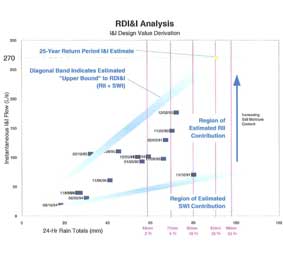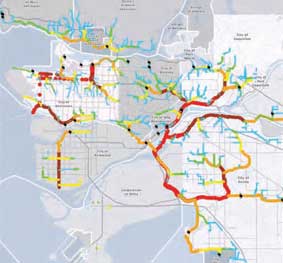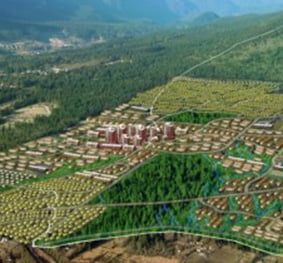
Using Dynamic Hydraulic Modelling to Understand Sewer Headspace Dynamics – A Case Study of Metro Vancouver’s Highbury Interceptor

Project Highlights
2012 Water Environment Federation (WEF) Conference
Metro Vancouver’s Highbury Interceptor (HI) is a 6.1 km long 2,900 mm diameter combined sewer with significant odour and headspace pressurization issues identified along its length. During winter storms large amounts of air have been observed expelled from manholes and vents, resulting in a howling noise. These events are significant enough that manhole covers have been lifted off, and residents have reported observing heaving of the asphalt pavement around the interceptor manholes. Pressure monitoring found that two distinctly different mechanisms are influencing the air pressure within the sewer head space. A fully-dynamic, computer-based hydraulic model in XP-SWMM revealed that the unique characteristics of the Highbury Interceptor profile resulted in the headspace in the sewer becoming completely isolated from upstream, downstream and tributary sewers under certain flow conditions. The results of the hydraulic model correlated well with the monitoring data, revealing that the extreme pressurization events occurred immediately following isolation of the headspace. An air displacement model was created, based on the hydraulic model, to develop the design parameters for an air extraction and odour control facility.
Case Study available by clicking the link in the Project Resources above.
Key Contact(s)
Tabe Johnson Project Engineer





